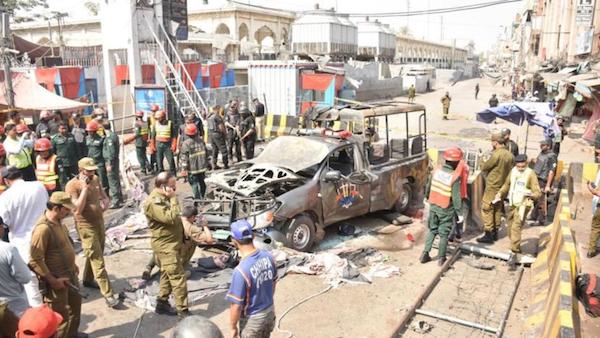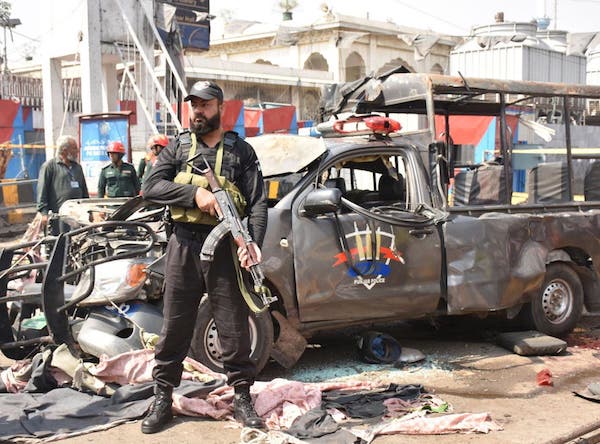On 8 May 10 people were killed, including five elite police force personnel outside the famous 11th century Sufi shrine of Data Darbar in Lahore while many others were injured. A young boy blew himself up in the vicinity of the shrine. Right after the blast several foreign media outlets started commenting on the attack with a rather malicious intent. For instance, Mr. Ashfaq Ahmad, associate editor of Gulf News Asia online, advised Pakistan “Pakistan needs to rethink terrorism policy to tackle the menace of suicide attacks and militancy at the grassroots level”. Such well-intended or not so well-intended advice glosses over the sustained efforts that Pakistan has been making over the last years to groom an efficient counter-terrorism force that is able to utilize modern scientific methods of investigation and analysis to nab terrorist networks and their handlers. That they have succeeded to a certain amount has been proven by the recent success of our security agencies. Pakistani counterterrorism agencies reached a decisive break-through less then two weeks after the Data Darbar fatal terrorist attack.
CTD Punjab and IB have proven their worth by having jointly solved the suicide blast case in Data Darbar, Lahore. They did so by cooperating between each other through Joint Operation Teams (JOT) not always an easy thing to do between different organizations and by utilizing all available methods and leads to detect the perpetrators, in particular human intelligence resources in and around the shrine, in Lahore and other places. That is how they could prove that Hizbul Ahrar, a branch of TTP that had also admitted responsibility for the terrorist attack, were behind it. What more, the evidence collected from the crime scene allowed them to ascertain the identity of the bomber and the type and quantity of explosives used. According to those findings the suicide attack was carried out by one Sadiq Ullah Momand, an Afghan national who had entered Pakistan from Afghanistan through Torkham border two days before the attack on 6 May. He was received and escorted to Lahore by a Pakistani, Tayyab Ullah alias Raaki, who is a resident of district Mohmand.
The agencies were able to arrest the contact person Mohsin Khan in Lahore where the two Pashtuns stayed before the attack. Mohsin Khan, son of Behram Khan, resident of Shabqadar, Charsadda had moved to Lahore in the garb of a labourer and was renting a room inside the walled city at Bhaati Gate. From Mohsin’s room the investigators recovered explosives, grenades, prima cord detonators all serious stuff. In addition, they found out how the explosives and suicide west were transported: they were hidden inside two MP3 players. The arrest of Mohsin Khan will provide even more leads about the network that Hizbul Ahrar is supporting in Lahore and beyond, about sleeper cells and connections to other terrorist and militant groups that might exist. A massive manhunt has been launched by CTD and IB across the country to arrest Tayyab Ullah and it will be just a matter of time for him to get caught. That means the investigation has had an intermediate success but it is far from over.

And there is another prime evidence that has emerged from this case. The suicide bomber came from Afghanistan! Not only Afghans are among those who fuel terrorism in Pakistan, but Afghanistan’s prime intelligence agency KHAD gives shelter and security to Pakistani terrorists so that they can operate from and stay secure with their families on Afghan lands. This is done at the behest of India’s RAW which virtually runs KHAD.
Regardless of whether if the bomber Sadiq Ullah was technically an Afghan or a Pakistani Mohmand, he came from the soil of the neighbouring country that in fact excels itself in blaming Pakistan “for sponsoring terrorism” at the time. With all its economic and financial problems Pakistan has taken it on itself to fence the border with Afghanistan in frustration. Vehemently resented by the Afghans it has cost the lives of several of our soldiers working on the project. Sadiq Ullah seems to have come via Torkham because most of the hidden paths are already closed. And in Torkham he needed to identify himself and was registered. This way could find out who he was and how he came.
There is no doubt that terrorism and militancy are a problem in Pakistan but Pakistan at least can pride itself in having acknowledged this fact and is working on a solution. Instead of the Gulf News Asia re-hashing the “good” Taliban and “bad” Taliban angle, he should have exposed Afghanistan’s deadly Indian-fomented terrorist attacks in Pakistan. With Afghanistan as a neighbour, an ongoing civil war and the weak central government in place, India has a free hand in carrying out terrorist attacks in Pakistan through KHAD. The Government of Afghanistan should rein in its intelligence agencies and stop them from killing innocent Pakistani citizens. CTO Punjab and IB must be commended not only for nabbing the terrorists but for having exposed Afghanistan for what it is, the actual ground zero of terrorism from where the 9/11 attacks originated, albeit citizens of another country. Like in the Data Darbar case, they used Afghanistan as their terrorist base.




